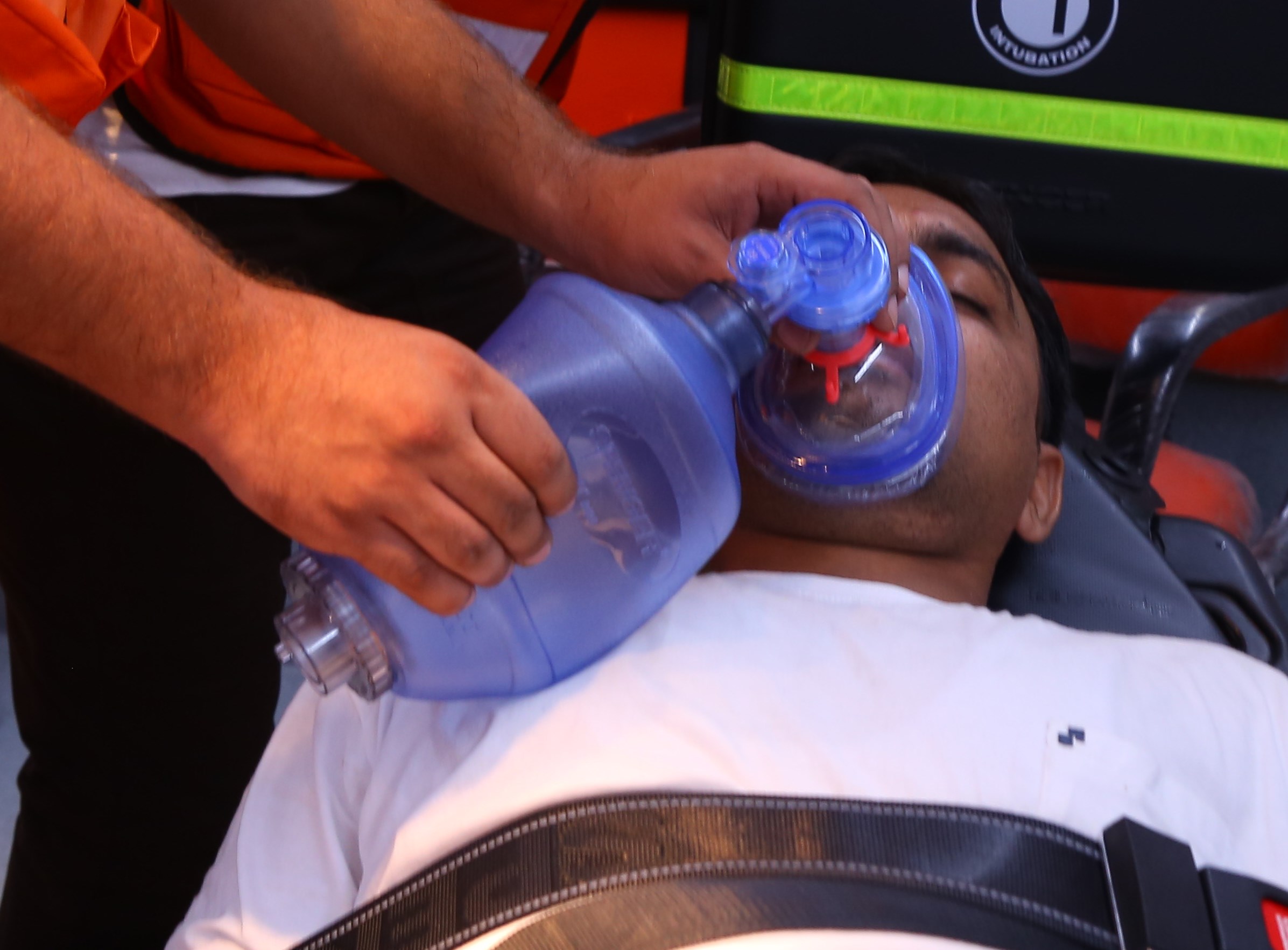
How to perform non-invasive positive pressure ventilation
Non-invasive positive pressure ventilation is ventilatory assistance without an invasive artificial airway. It is delivered to a spontaneously breathing patient by means of a tight-fitting mask covering the nose or the nose and mouth together
As the airway is not protected, there is a real risk of aspiration ab ingestis, so patients must have adequate alertness and functioning airway reflexes.
Non-invasive positive pressure ventilation can be administered as
- Continuous positive pressure ventilation
- Biphasic positive airway pressure, which is triggered by the patient’s respirations
With continuous positive airway pressure, the pressure is kept constant throughout the breathing cycle without any additional inspiratory support.
When using biphasic positive airway pressure, the physician sets both positive expiratory airway pressure (which is the physiological equivalent of continuous positive pressure ventilation and positive end-expiratory pressure) and, in addition, positive inspiratory airway pressure.
Indications for non-invasive positive pressure ventilation
Non-invasive positive pressure ventilation is primarily used to delay and possibly prevent the need for endotracheal intubation and to facilitate extubation of spontaneously breathing patients.
Indications include
- Acute exacerbations of chronic obstructive pulmonary disease, e.g., with PaCO2 > 45 mmHg or pH < 7.30
- Cardiogenic pulmonary oedema with impending respiratory failure
- Obesity-hypoventilation syndrome
- Immunocompromised patients with impending respiratory failure, where intubation carries a higher risk of infection
- Hypoxemic respiratory failure
- Patients with advance directives for non-intubation who would otherwise require intubation
The optimal patient is alert and cooperative with little airway discharge.
In an outpatient setting
- continuous positive airway pressure is often used for patients with obstructive sleep apnoea.
- Biphasic positive airway pressure may be used for patients with concomitant hypoventilation syndrome due to obesity or for chronic ventilation in patients with progressive neuromuscular or chest wall disease.
Contraindications to non-invasive positive pressure ventilation
Absolute contraindications
- Cardiac or respiratory arrest, or imminent arrest
- Haemodynamic or dysrhythmic instability
- Severe upper gastrointestinal tract bleeding
- Facial deformity or trauma
- Upper airway obstruction
- Abundant secretions or inability to eliminate them
- Vomiting (which can cause life-threatening ab ingestis aspiration) or impaired gastric emptying (as occurs with ileus, intestinal obstruction or pregnancy) which increases the risk of vomiting
- Imminent indication for surgery or context that does not allow interventional monitoring for prolonged procedures
- Dullness or inability to cooperate with instructions
Complications of non-invasive positive pressure ventilation
- Possible aspiration ab ingestis in unprotected airways
- Barotrauma, including simple pneumothorax and hypertensive pneumothorax
Non-invasive positive pressure ventilation equipment
- Biphasic positive airway pressure equipment (or a multifunction ventilator)
- Face mask or nasal mask
- Head strap to secure the mask to the patient’s face
- Adaptable dial to determine the optimal mask size for the patient
Additional considerations
- Positive inspiratory pressure ventilation should be set lower than the opening pressure of the oesophagus (20 cm-H2O) to avoid gastric insufflation.
- Indications for conversion to endotracheal intubation and conventional mechanical ventilation include the development of reduced alertness and transport to an operating theatre where airway control and full ventilatory support are required.
Positioning for non-invasive positive pressure ventilation
- The patient may be sitting upright or semi-recumbent.
Step-by-step description of the procedure
- Determine the appropriate size of the face mask by adjusting the ferrule on the bridge of the patient’s nose to a size that covers the entire mouth.
- Fasten the front part of the strap around the patient’s head. Do not fasten the strap too tightly; leave one or two fingers under the strap and then tighten it.
- Fasten the lower straps of the mask on each side.
- Attach the top of the mask to the front of the strap. This upper part of the mask can have fine adjustments: inward or outward, up or down, in order to optimise patient comfort.
- Connect the biphasic positive pressure ventilation hose to the patient, with the carbon dioxide release valve facing away from the patient.
- Typical initial settings for biphasic positive airway pressure are: positive inspiratory airway pressure = 10 to 12 cm-H2O and positive expiratory airway pressure = 5 to 7 cm-H2O.
- Adjust the position of the mask to maintain a good seal against the face. A small air leak, such as 5 L/min, is negligible.
- Check the patient at regular intervals, beginning 30 minutes after the start of biphasic positive airway pressure, to assess ventilation and patient comfort, and increase inspiratory lung pressure to 15-20 cm-H2O if necessary.
Non-invasive positive pressure post-ventilation care
Close monitoring of patients after initiation of non-invasive positive pressure ventilation is important to identify those whose condition does not improve (usually within 1 or 2 h) and who may therefore need tracheal intubation. Repeated blood gas tests may help to guide management.
Tips and tricks for non-invasive positive pressure ventilation
To facilitate patient comfort and mask acceptance, ask patients to hold the mask against their face before attaching the straps.
Read Also:
Emergency Live Even More…Live: Download The New Free App Of Your Newspaper For IOS And Android
Manual Ventilation, 5 Things To Keep In Mind
Anxiolytics And Sedatives: Role, Function And Management With Intubation And Mechanical Ventilation
FDA Approves Recarbio To Treat Hospital-Acquired And Ventilator-Associated Bacterial Pneumonia
Pulmonary Ventilation In Ambulances: Increasing Patient Stay Times, Essential Excellence Responses
Ambu Bag: Characteristics And How To Use The Self-Expanding Balloon
AMBU: The Impact Of Mechanical Ventilation On The Effectiveness Of CPR
Increased Mental Disorder Diagnoses In Children After Invasive Mechanical Ventilation (IMV)


